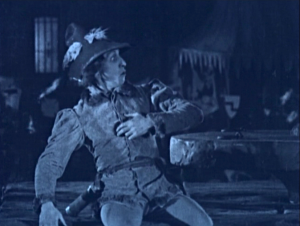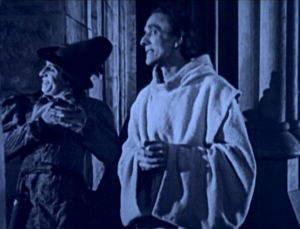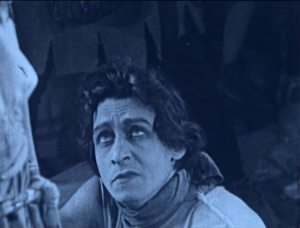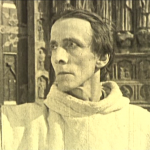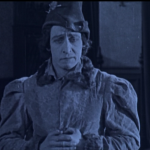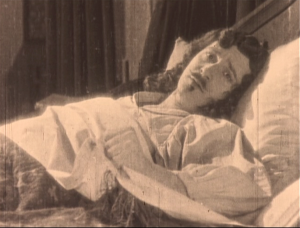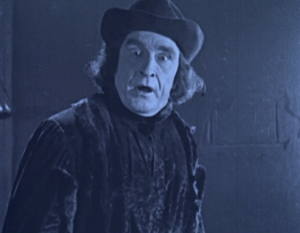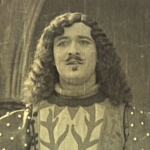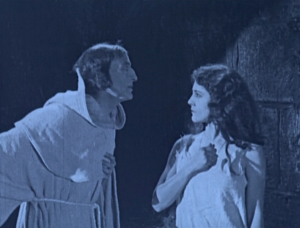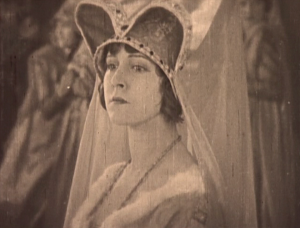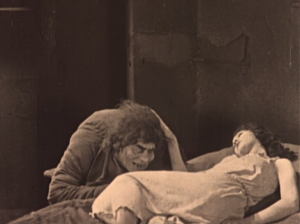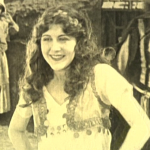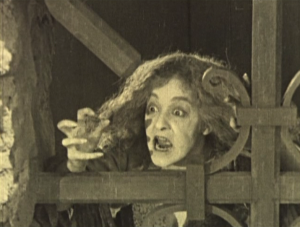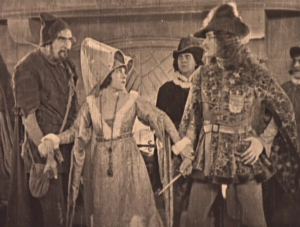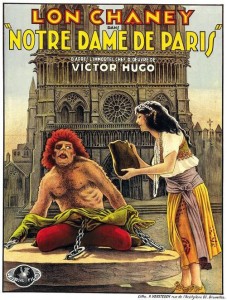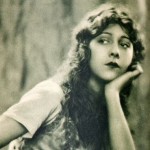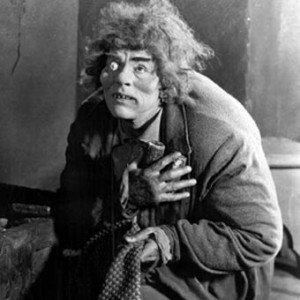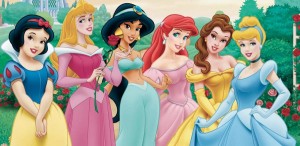Gringoire wears many hats in the realm of Hunchback adaptations. Sometimes he the hero, sometimes the narrator, sometimes he is the comic relief and sometimes he is not even there. In the 1923 version in addition to being comic relief, Gringoire is Phoebus’s side kick. That’s right in order to justify Gringoire being in the movie they made him more or less Phoebus’ sidekick. As Gringoire spends more screen time with Phoebus and doesn’t even speak to Esmeralda.
Gringoire’s only function in the movie is acting as a liaison between Phoebus and Esmeralda. Gringoire’s introduction is thrown in during the feast of Fools and all he really does is make does reaction shots to Quasimodo. The next time we see him is when he gets in trouble with the Court of Miracles. In this version no marriage takes place instead Esmeralda orders the Court to let him go. After that Gringoire starts acting as the middle man for Esmeralda and Phoebus. In one scene he delivers a message to Phoebus from Esmeralda. Phoebus then awards him with food but Phoebus’ constant joy keeps preventing Gringoire from eating. The scene is enjoyable and funny and it is unfortunately Grigoire most memorable scene. After that he tells Phoebus Esmeralda is in Notre Dame and didn’t hang and we see him at the end where is happy that everything worked out for the lovers.
Beyond his comic/sidekick role, Gringoire doesn’t have much of personality. He is a poet, he likes food and hates to die. So I guess in this capacity he like the book version. Unfortunately I think this role could have been easy removed from the movie. If there is no marriage their is little point to the Court of Miracle scene. That scene and Gringoire were only in the movie because they tried very hard to maintain the book and even when the movie went in a different direction they still tried and still and more less failed.
If Gringoire wasn’t Phoebus‘ sidekick there would be nothing for him to do and the movie tries to keep almost detrimentally close to the book. The film good have eliminated him and it really wouldn’t have made much of a difference.
Next Time – Dom Claude

